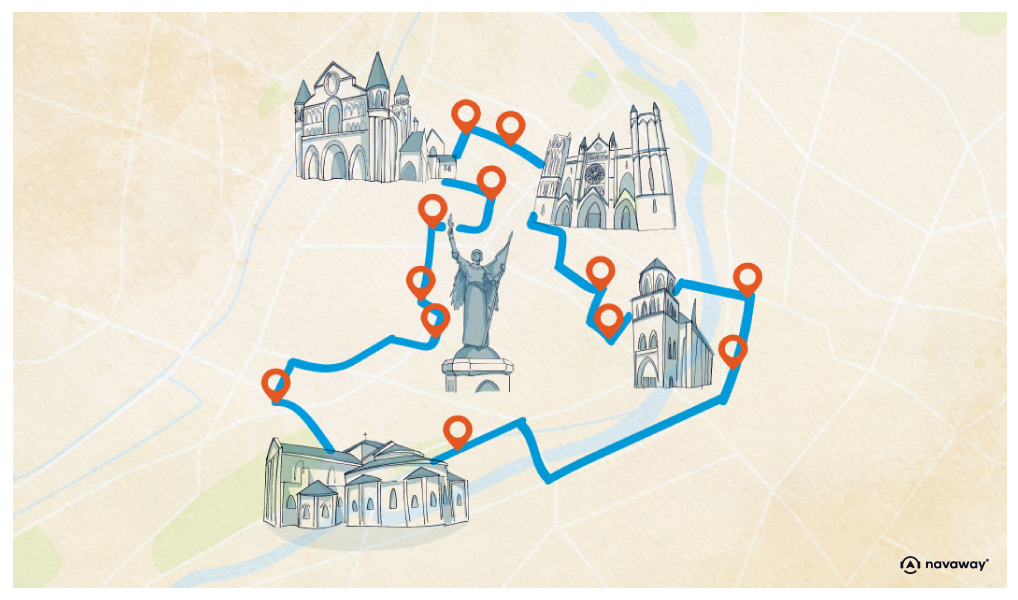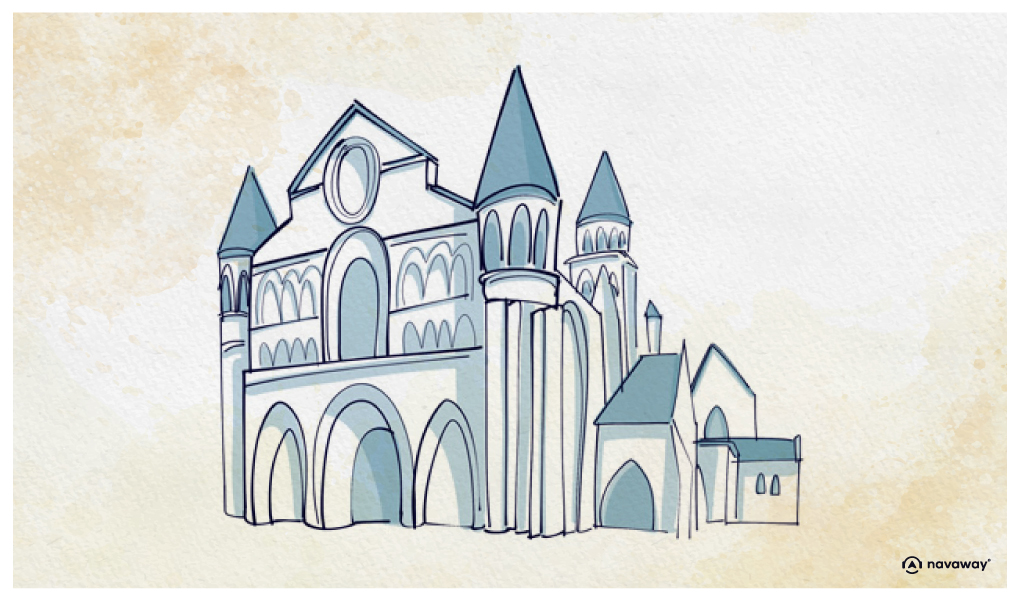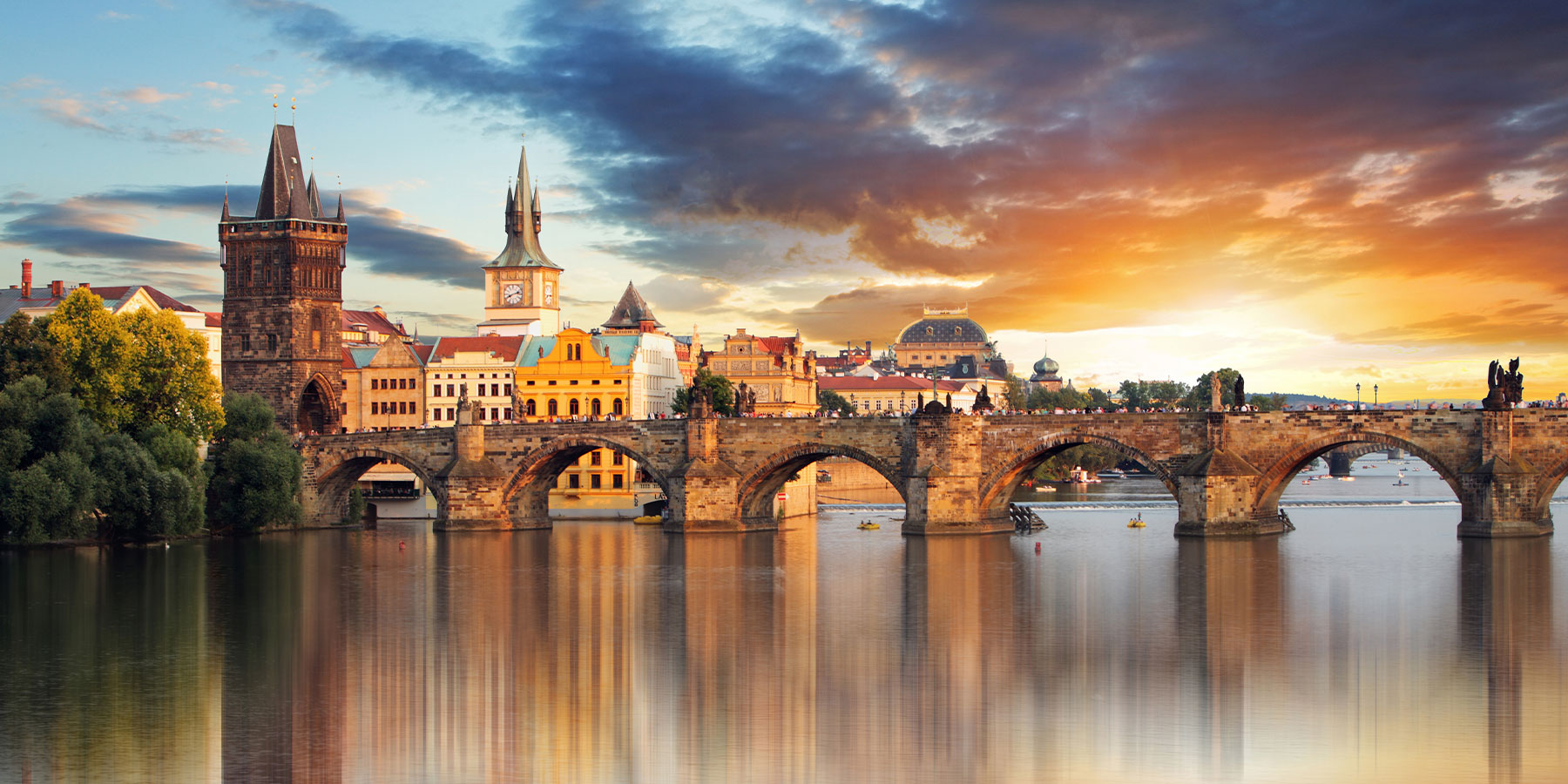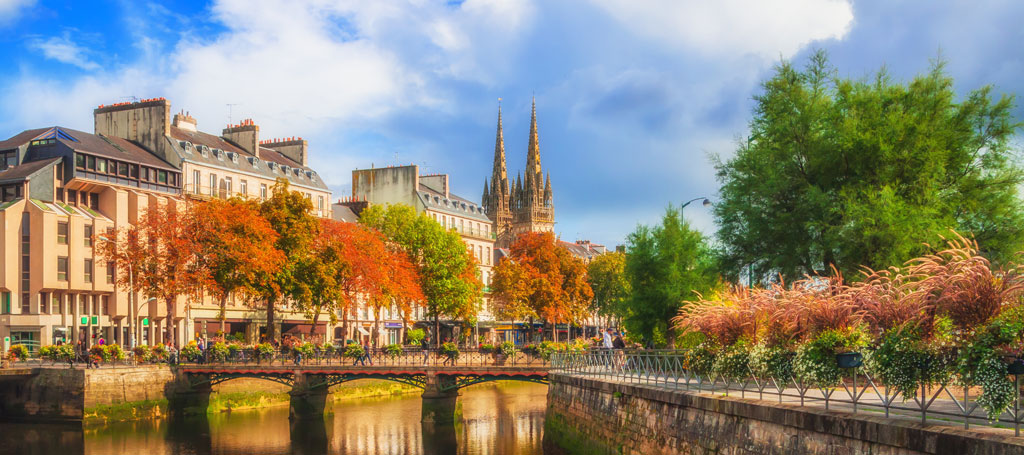
Notre-Dame-de-la-Grande

This point of interest is available as audio on the tour: Visit Poitiers, The wonders of Poitou
Welcome to the forecourt of Notre Dame de la Grande church! This is Poitiers’ finest landmark ( and no, it’s not the Futuroscope). The façade of this church is in an impressive Poitiers Romanesque style. This carved history book is to be admired without moderation. It still bears witness to the talent of the craftsmen of the past. Look at the top of the façade. You will see Christ depicted in an oval shape. You may not be able to see him clearly from here, but he is flanked by the symbols of the 4 evangelists: a man for Matthew, a lion for Mark, a bull for Luke and an eagle for John. Below, around the central window, you can see 14 figures carved in stone. These are the 12 apostles and two bishops, portrayed as their heirs. According to art historians, the figures on the left are the Bishop of Rome, representing the power of the Pope, and on the right the Bishop of Poitiers, underlining the episcopal power of Poitou. The frieze above the door reveals biblical scenes, recounting the advent of God on Earth in the form of Jesus Christ, to save mankind from the original sin. The church was first mentioned in the 10th century, under the name Sancta Maria Major, in reference to the basilica of Santa Maria Maggiore in Rome. Then, 2 centuries later, it underwent major renovations. It was at this time that the beautiful façade was sculpted. In the 15th and 16th centuries, several private chapels for the upper middle classes were built on the north side. However, in 1562, at the height of the War of Religion, the Huguenots looted the building, burning the relics and decapitating most of the statues on the façade. For Protestants, venerating icons or statues was considered idolatry, in other words, worshiping objects rather than God himself. Listed as a historic monument in 1840, it has been renovated several times since. Do not hesitate to visit the interior once you have identified the scenes from the Bible and found the statues without heads. I don’t know about you, but I haven’t seen many churches painted like this one! The paintings date from an 1850 restoration and have been widely criticised. However, they are apparently closer to what was done in Romanesque art than the uncoloured walls. Did you know that the façade was originally painted too? This was fairly common in the Middle Ages. You might even be lucky enough to see it. In summer, sound and light shows reveal the polychromy of Notre-Dame at nightfall. Now, let me briefly recount the legend of the miracle of the keys that took place in the church. Lets be clair from the onset, from a historical point of view, this story is totally implausible, because the facts don’t add up. It takes place in 1202, when the English were besieging the town. It goes without saying that the mayor’s assistant made a pact with the enemy and offered to hand over the keys to the city in exchange for a handsome amount of money. He broke into his boss’s office to steal them, but just as he was about to take them, they magically disappeared! The next day, when the mayor went to church to pray, frightened by the meaning of the disappearance of the keys to his town, he couldn’t believe his eyes when he discovered them in good hands – the hands of the statue of the Holy Virgin. The story goes that the English fled, frightened by the various strange sights that came haunting them during the night! You’ll find this legend both on a stained glass window and on a painting. Take the Grand-Rue to the right of the church to get to Poitiers Cathedral.


Discover Poitiers with app
An interactive guide through the most beautiful streets, squares, and districts
16 fun audioguides full of historical facts, anecdotes, and legends





Comments